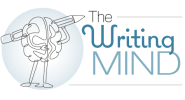Developing writing skills relies on the ability to effectively use the tools of written communication. In nursing school, you learned that proteins are made up of chains of amino acids joined end to end. In writing, amino acids = words, chains of amino acids = sentences, joined chains = paragraphs, and protein = the finished product, whether it is a book, an article, or even a letter to the editor. Words, sentences, and paragraphs are the essential amino acids (tools) you can use to create a powerful impression on readers.
But just how do you put everything together to create an effective written work? To help me accomplish that task, I distilled the writing advice I’ve read and received over the years into the four Cs—clear, concise, correct, and compelling. Below are the points I keep in mind for each.
Clear
- Avoid jargon and acronyms.
- Be specific (quarter-sized wound, not small wound; replace “many” and “some” with numbers, if possible; what age range are “older” patients?).
- Provide transitions as signposts for readers: (to make another point, use “In addition”; to show sequence, use first, second, third, etc.).
- Use examples to “show” instead of “tell” (give the formula for calculating infusion rate, then give an example).
- For the most part, use active voice (“The nurse should slow the administration rate” is better than “The administration rate should be slowed,” which doesn’t tell you who should slow the rate.) Active voice isn’t always appropriate, but you’ll find your writing will be more effective if you use it often.
- Use parallel structure when you format lists (for example, assess, plan, implement, and evaluate not assessing, plan, implemented, evaluate).
Concise
- Focus on what readers need to know, not what’s nice to know. Readers want information they can use.
- Make paragraphs shorter rather than longer.
- Cut unnecessary words (“in order to” can almost always be “to”) and avoid “ize” (“use” not “utilize”).
- Consider graphics and tables instead of lengthy text.
Correct
- Check all numbers. For example, be sure percentages in charts add up to 100%. If they don’t, explain why (e.g., rounding of numbers).
- Check reference citations. Be sure they’re accurate and in the right reference format.
- Check grammar and spelling. Don’t rely solely on your computer’s spell and grammar check, although that’s a good place to start. For instance, spell check may miss use of “there” when “their” is the correct choice.
Compelling
- Don’t state the obvious (“Nurses face ethical dilemmas.”) or if you do, support it with some eye-grabbing information (“Nurses experience an ethical dilemma once a week, on average, according to a recent survey.” [information fictitious])
- Take a stand. “Tend to” and “generally” may be appropriate if, for example, study results aren’t strong, but avoid overusing terms such as “apparently.”
- Anticipate readers’ questions.
- Avoid bias by omitting unnecessary “labels” such as “nonadherent” or “failed to follow the treatment plan.” Avoid gender bias by using plurals, such as “they” instead of “she.”
- Tailor the article to the reader. Factors to consider include level of experience and practice setting. An article on complications of acute MI will differ whether it’s for an experienced critical care nurse or a novice medical/surgical nurse.
I hope you find this list helpful in your writing efforts!
References
Saver C. The humble sentence. Nurse Author & Editor. 2019;29(4):5. naepub.com/writing-basics/2019-29-4-5/
Saver C. Anatomy of Writing for Publication for Nurses, 3rd ed. Indianapolis: Sigma; 2017: 67-92.




















2 Comments.
Correct, Amazing, Glamorous writing.
Effective Writing.